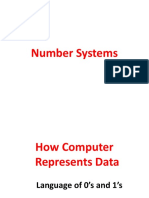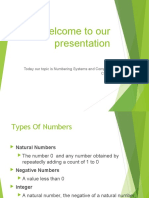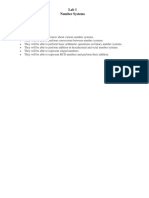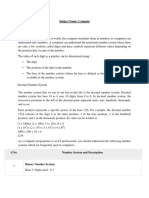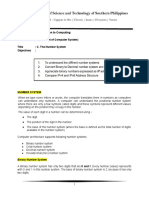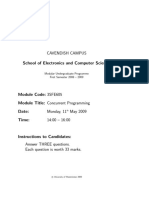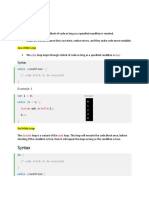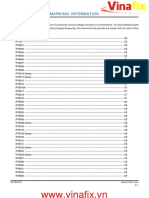0% found this document useful (0 votes)
180 views7 pagesComputer Architecture Unit - 1 Notes
The document provides an overview of various number systems including decimal, binary, octal, and hexadecimal, detailing their bases, digits used, and examples of conversions between them. It explains binary arithmetic and its applications in computing, as well as the methods for converting between binary, octal, and hexadecimal systems. Additionally, it highlights the significance of these number systems in digital electronics and computing.
Uploaded by
nikhilnath196Copyright
© © All Rights Reserved
We take content rights seriously. If you suspect this is your content, claim it here.
Available Formats
Download as PDF, TXT or read online on Scribd
0% found this document useful (0 votes)
180 views7 pagesComputer Architecture Unit - 1 Notes
The document provides an overview of various number systems including decimal, binary, octal, and hexadecimal, detailing their bases, digits used, and examples of conversions between them. It explains binary arithmetic and its applications in computing, as well as the methods for converting between binary, octal, and hexadecimal systems. Additionally, it highlights the significance of these number systems in digital electronics and computing.
Uploaded by
nikhilnath196Copyright
© © All Rights Reserved
We take content rights seriously. If you suspect this is your content, claim it here.
Available Formats
Download as PDF, TXT or read online on Scribd
/ 7
